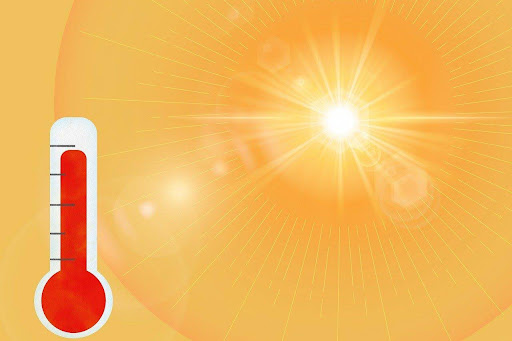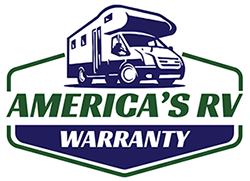
2023 went on record as the hottest summer in the United States, and just recently, meteorologists predicted that this summer will likely be much hotter. While summers are the best time for RVing, too-hot temperatures can turn your much-anticipated road trip into a real-life nightmare.
Left unchecked, your RV becomes a potential oven under the sun, which can be extremely uncomfortable and, in severe cases, cause health complications like heat rash or stroke. So how do you keep your RV cool during summer?
Opening your windows or blasting the A/C might offer some relief, but these solutions aren’t always enough to maintain a consistent cool temperature. This article has compiled several strategies you can adopt to keep the cool air in and hot air out of your RV for an enjoyable road trip
This strategy is a no-brainer for how to keep your RV cool during summer. Where you park when you’re not out on the road can make a huge difference in how hot or cool your RV is. If you’ve ever left your car parked outside on a sunny day with no shade for a few hours, then you know just how hot it can get. The same applies to your RV, so it’s important that whenever you need to park it, you should find some shade.
To do this, you can park under trees or near well-positioned buildings. If you’re staying at a campsite or an RV park, for example, you can book a shady spot in advance for your RV by utilizing site maps with photos of each spot. However, if you show up without a reservation, you can also ask if there are available spots with shade—you might just be lucky enough to get one.
If you can’t find a shaded spot to park, you can still keep your RV cool. One of the most popular ways to create shade is by extending your awnings. These provide shade to one side of your RV and keep it cool. You can also use tarps to create shade for your RV by tying one side on your RV and the other on a tree or the ground.
The wind or breeze can also help your RV cool. Generally, the wind moves from west to east in the United States, but always check local weather conditions to ascertain these patterns. Parking your home on wheels where it gets maximum exposure to the breeze can help keep hot air out.
For instance, if you park your RV with the rear facing west, you can create a vacuum effect, where the wind draws the hot air out and increases ventilation. Alternatively, you can open the windows on the side opposite the direction of the wind for cross ventilation in the RV.
Cooking inside your RV is a sure way of heating up your RV on a hot day, and you don’t want that. To keep the temperatures reasonable, consider cooking al fresco if you’ve parked in a secure location such as a campground. Not only does it help keep your RV cool but also helps to bring your family closer. Cooking or grilling together outside enables every family member to bond and create lasting memories. It also reduces odor build-up in your RV, eliminating a hassle that often necessitates additional ventilation and air conditioning.
Though a bit more pricy than incandescent bulbs, LED lights can help bring down temperatures in your RV. This is because traditional bulbs emit a lot of heat when switched on, making your camper hotter and more uncomfortable. Investing in LED bulbs can help solve this problem and also help you save money because they use way less electricity than incandescent bulbs.
While skylights are important for increasing the amount of natural light in your RV, they can become an issue on hot sunny days. Skylights can increase temperatures in your RV by streaming in direct rays of sunlight. Therefore, it’s best to cover them to reduce the likelihood of your camper heating up. To do this, you can cover the skylight with a reflective insulation material like Reflectix on the inner side and secure it with Velcro tape.
You can take advantage of cool summer nights to bring down any heat your RV might have accumulated during the day by cracking the windows open. The cool breeze can also help with ventilation and get rid of any odors your RV may have. Then, before the sun rises and warms up the air outside, you should close the windows.
Since windows can also bring heat into your RV, you can cover them with insulating material such as spray foam, especially if you park your RV in direct sunlight.
Your door is another way heat can creep into your camper, so keeping it shaded can help keep away hot air. To achieve this, you may have to position your RV strategically when parking it to ensure the door side is under the shade from trees or buildings. Additionally, you can use awnings to keep your doorway cool and away from direct sun. Lastly, if your door has glass, you may also need to cover it with insulating materials.
Depending on your inbuilt A/C and thermostat cannot efficiently cool your RV in extremely hot summers. That’s why it’s recommended you use portable fans or A/C units. For instance, you can strategically place fans around your camper, like near your refrigerator vent, to move hot air out and enhance cool airflow when your A/C is on. Portable A/C units can also help keep your RV cool when parked instead of keeping your engine running.
Summer is for fun and exploring—it’s the perfect time to reconnect with your family and friends through traveling. But as summers get hotter, you may have put some of these plans on the back burner. Luckily, you no longer have to because now you know how to keep an RV cool during summer.
But before you hop onto your RV this summer, do you have a plan for any mechanical breakdowns? At America's RV Warranty, we provide RV owners peace of mind whenever they’re on the road. Our extended warranty coverage. protects RV owners from expensive mechanical repairs. To learn more about our coverage and pricing, request a quote today..
